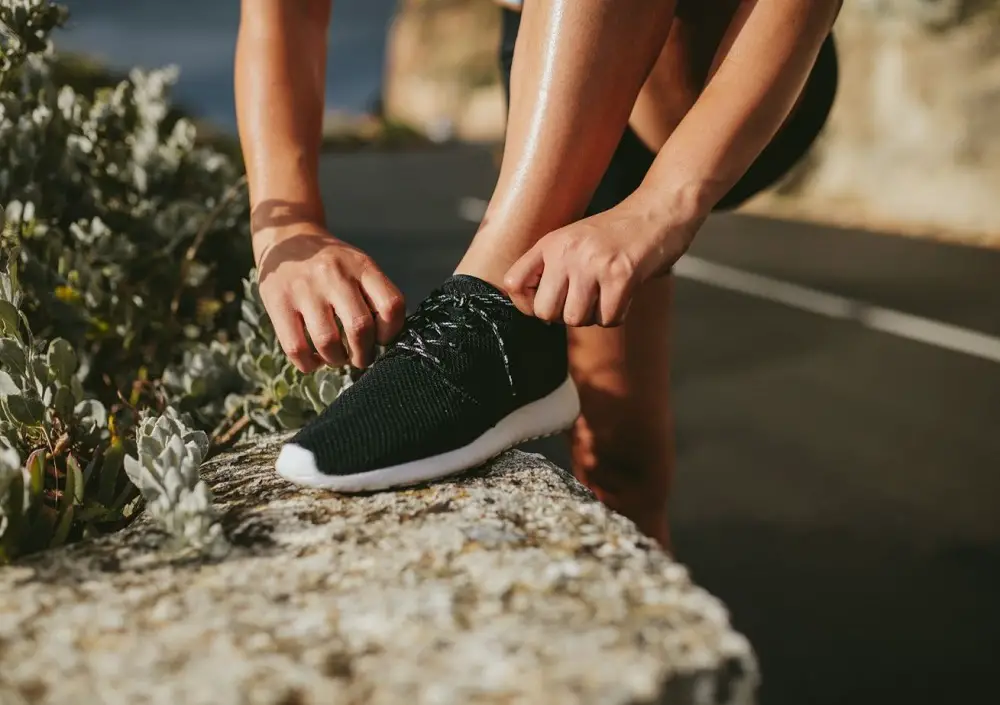While it’s well known that running shoes are the best option if you’re an avid jogger or walker, not many people are aware of how important good lacing is to ensure the performance of your running shoes.
The majority of people will simply use the lacing that the shoes come with, or use the same lacing technique they use for all their other shoes.
This is a mistake, however, as incorrect lacing can lead to discomfort, blistering, pain and ultimately ruin your comfort and performance while you run.

While running shoes are often designed to accommodate a wide range of foot shapes and sizes, you can improve the fit and support your running shoes provide by ensuring you choose a lacing system that suits your own particular running shoes and feet.
In this guide, we’re going to look at some of the best ways to lace your running shoes to ensure that you get the best fit you possibly can, which will help prevent a host of issues, especially on longer or more difficult runs.
To start with, let’s take a look at the most popular and well-known lacing system.
Heel Lock Lacing
The heel lock lacing system is one of the best options to ensure a secure and stable fit and can prevent slippage and friction from occurring and causing blisters in the heel area.
This style of lacing is sometimes referred to as the runner’s loop style, and the key difference this lacing system uses is that the last two eyelets for your laces will be used to ensure your shoe fits as tightly as possible.
This is a versatile system that will work with most running shoes and adds a lot of extra stability for almost any foot type.
1. Lace the shoes in any style you like
The beauty of the heel lock system is that it works with almost any standard lacing system, be it the classic cross-over method or any other lacing technique such as the parallel lacing style.
It’s probably best to try a few different lacing types to find which one works best for you, but once you know you can add the heel lock to make the lacing even more secure.
2. Push the lace through the final eyelets on both sides of the shoe
Take a lace from one side of the shoe and push it through the topmost eyelet on the same side of the shoe, then repeat with the other lace.
If there are two additional eyelets (this varies from shoe to shoe) you can lace this also. If there are two additional eyelets this will give even more stability, however, you can also only use one if using two is too uncomfortable.
3. Leave a loop
Now that you have the lace through the topmost eyelets, leave a roughly 2-inch loop between the top eyelet and the one below it.
The loop should stick out like bunny ears on either side of the shoe. From here, you can take the ends of your laces and cross them over each other, then inserting them through the loops you’ve left between the topmost and second-most eyelets.
4. Secure the Heel Lock
Now that you have the laces through the loops you can tighten them, which will cause the loops to close in on the laces and hold them in place. You should have a crossed lace over the top of your tongue and leading into the closed loops created by the top two eyelets.
Simply repeat this process on the other shoe and you have created one of the most secure lacing systems possible!
Lacing for Wide Feet
A common issue that comes up for some runners is having wide feet. It is a sad truth that most running shoes are designed for an average sized foot in terms of width, and both large and small shoe sizes don’t always accommodate different widths very well.
Thankfully you can lace your shoes in such a way as to make the shoes more comfortable without needing to totally replace them!
1. Insert the laces
Take your shoe and your lace and pull the lace straight across the bottom two eyelets. Make sure to give yourself an even amount of lace on both sides to be able to work up the shoe evenly as you go.
2. Work your way up the shoe
Take an end of the lace and cross it over the shoe to the next eyelet on the opposite side, entering the eyelet from the inside of the shoe and pushing straight out. The tip or end of the lace should always be facing out as it passes through the eyelet.
Do this for both sides of the shoe.
3. Skip the next eyelet
This is the critical phase of lacing for wide feet and this is what will make the shoe more comfortable.
Instead of lacing the very next eyelet on the opposite side as you would normally, skip an eyelet and lace the one above it. So you should have your starting point at the bottom of the shoe, a laced eyelet, then an empty one, then a laced one, and so on.
Alternating the eyelets and leaving half of them unlaced will make the shoe fit more loosely and comfortably for wide feet and is a great way to make your running shoes more comfortable.
The downside of this is that the shoe won’t be quite as secure as if all the laces were in all of the eyelets, and a greater strain will be put on the eyelets which are laced, which could lead to more wear and tear on the eyelets that are laced.
4. Tidy the laces
Once you reach the top of the shoe, give the laces a straighten up and ensure they are evenly distributed, and repeat for the other shoe!
